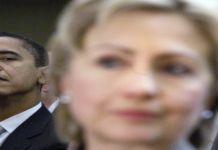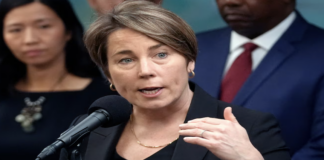AFL-CIO was the largest labor union in the country and voted to raise union membership dues in October. This is in what its leaders call an effort to recruit one million new members.
Bloomberg Law reported that the union expects to raise $10 million annually from AFL-CIO’s 12 million members in 58 affiliate locals.
The announcement is hidden under a mountainous pile of compost but it yields a few nuggets that are not flattering to Big Labor and AFL-CIO specifically.
The Bloomberg story explains, among other things, that the AFL-CIO Executive Board voted to increase its monthly per-capita membership fees beginning in January and a second phased increase to follow.
It is notable that there is no mention of how rank and file reacted to the increase. Maybe it’s because the union leadership, which claims itself to be a member-driven organization based on democratic principles, couldn’t bother to get permission before approving higher dues deductions or soliciting feedback.
As with everything else, the union’s motivation was a hunger for more money from others. This allowed it to fill the pockets of its leaders as well as corrupt politicians who passed laws that kept the entire enterprise legal.
AFL-CIO, if it were a member-driven organization, would be more concerned with limiting the labor supply to maintain artificially high wages for those who are affiliated with the union.
Milton Friedman, Nobel Prize-winning economist, explained that the phenomenon was caused by “(U]nions raising wages for their members through restricting entry to an occupation. (And) those higher wages are attributable to other workers who find their chances reduced.”
Even if that were possible, adding one million more workers to the AFL-CIO membership rolls would not be of any benefit to those who already pay a portion to AFL-CIO every month.
It would likely reduce their incomes, and even put them in danger of losing their jobs as employers struggle to absorb the multitude of workers with comparable skills who expect to be paid union wages.
This scenario would fuel an already struggling economy that is being harmed by the incompetent actions of a president who was largely supported by AFL-CIO, and other luminaries from Big Labor.
The increase in recruiting efforts will result in an estimated $10 million per year. Shuler can spend the money on whatever he chooses.
We have no strings attached to the revenue, so Madame President can only assure us that it won’t disappear down the same rathole as every other union dues dollars.
These optimistic projections are, fortunately, as grounded in reality as most of the left’s dogma.
Liberal politicians who impose a tax on a finite amount of taxpayers often get a different result than they promised. It’s not a zero-sum game.
Every new assessment leads to more Americans opting for tax shelters or moving their assets offshore, rather than giving Uncle Sam a larger share of their shrinking paychecks. As a result, AFL-CIO members will continue to decline to follow the union’s increasingly expensive rules.
The 2018 U.S. Supreme Court ruled that government employees are entitled under the First Amendment to refuse to join or pay dues to a labor union as a condition of their employment. Since then, thousands of American workers have chosen to opt-out of union servitude.
The Freedom Foundation helped free almost 130,000 public employees and deprived unions of corresponding $250 million in dues revenues. This doesn’t include the millions of people who have opted out.
These are the losses that the AFL-CIO desperately tries to make up for by shifting the weight onto the shoulders of its shrinking members.
How many of these schemes will the union’s new scheme prove to be the straw that breaks the back?
Shuler announced that she was making an unprecedented investment to organize to help workers in America seize this moment.
The problem is that that investment, as always, comes from someone else’s pockets. This is the only unique moment in which the Supreme Court and dire economic necessity finally force union leaders such as Liz Shuler to face it.










